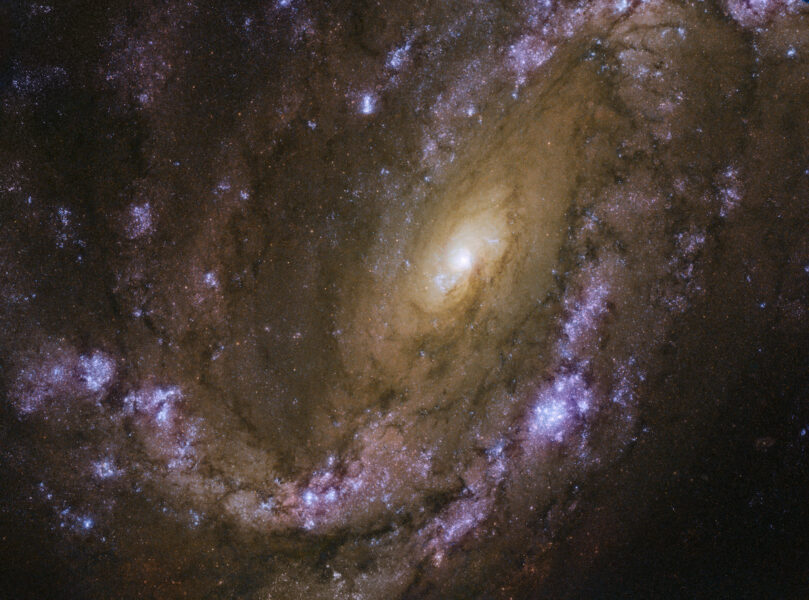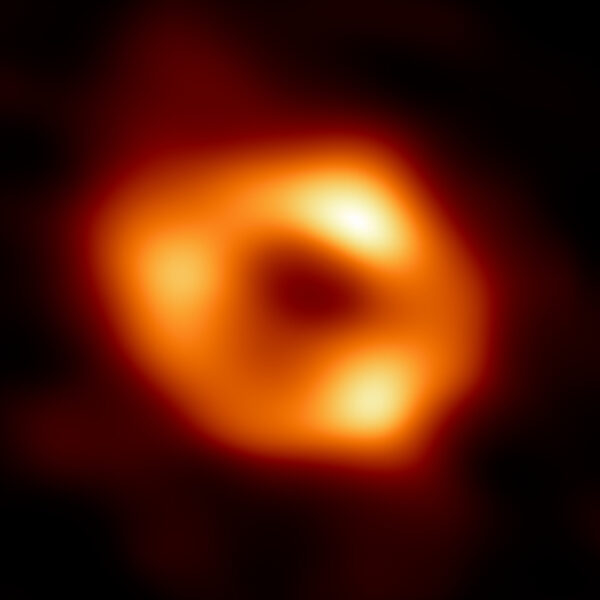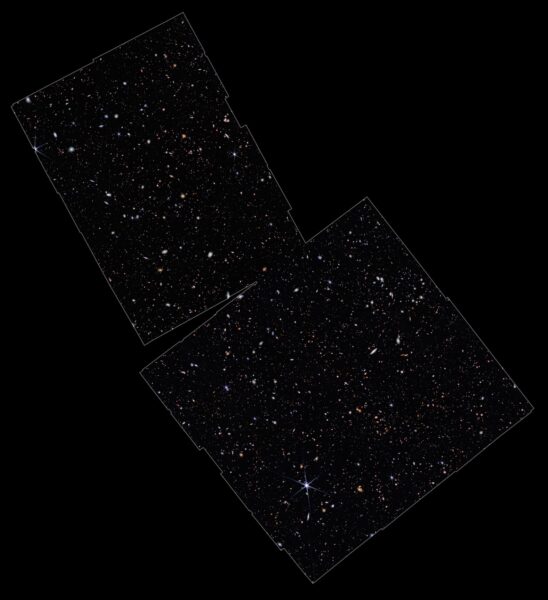The seeds of supermassive black holes could show up in an upcoming sky survey with JWST.

ESA / Hubble & NASA, D. Crenshaw and O. Fox; CC BY 4.0
Astronomers are still trying to figure out exactly how supermassive black holes form. They may be the result of smaller black holes combining, and a new study says that these smaller black holes could show up in an upcoming survey with JWST.
It Starts with a Seed

EHT Collaboration; CC BY 4.0
Supermassive black holes like the one at the center of our galaxy, shown here in an image from the Event Horizon Telescope, may have grown from smaller “seed” black holes. [EHT Collaboration; CC BY 4.0]The biggest black holes in the universe can tip the scales at billions of solar masses. What’s more, the first ones formed within a couple of hundred million years of the Big Bang. Just how did the universe build such gargantuan objects so quickly?
Usually black holes form when a massive star dies, but no single star could birth a black hole that big. Instead, like flowers, supermassive black holes probably grow from seeds. Perhaps the smaller black holes created by the deaths of the first massive stars merged. This could create black holes up to a thousand solar masses, which gravity could then combine into supermassive black holes. Black holes up to a million solar masses may have formed directly from the gravitational collapse of dense gas clouds in the early universe. They too would merge over time.
Finding a seed that has yet to germinate into a supermassive black hole would allow astronomers to see the process in action. Andy Goulding and Jenny Greene (both Princeton University) have recently investigated whether black hole seeds could reveal themselves in upcoming deep sky surveys with JWST. They focus on black holes with approximately one million solar masses at redshifts between 7 and 10.
Color Differences
By definition a black hole is invisible. Its gravitational pull is so intense that it swallows all light that falls upon it. Yet black holes often reveal themselves through their accretion discs — the super-heated queue of material waiting to be devoured. Their accretion discs are often bright enough to be seen across most of the visible universe. These bright centres of distant galaxies are called active galactic nuclei.
In their study, Goulding and Greene combined templates of active galactic nuclei at lower redshifts with mock galaxy catalogs specifically created for JWST. They concluded that the best local analogs of distant seed black hole active galactic nuclei are Seyfert I galaxies — active galaxies with broad emission lines in their spectra. The ultraviolet emission of black hole seeds and Seyfert I galaxies is expected to be similar.

NASA, ESA, CSA, M. Zamani (ESA/Webb)
They then looked at whether these active galactic nuclei could show up in the upcoming JWST Advanced Deep Extragalactic Survey (JADES). They found that a distant active galactic nucleus powered by a seed black hole should appear a different colour to the rest of the galaxy in images taken by JWST’s Near Infrared Camera (NIRCam). Specifically, the galaxy will appear blue and the nucleus will be redder.
While it’s hard to put an exact figure on it, Goulding and Greene estimated that astronomers might expect to find a few to tens of seed black holes within a one hundred square arcminute field. Perhaps then we’ll finally start to understand how supermassive black holes came to reside in the heart of almost every galaxy in the universe.
Citation
“An Empirical Approach to Selecting the First Growing Black Hole Seeds with JWST/NIRCam,” Andy D. Goulding and Jenny E. Greene 2022 ApJL 938 L9. doi:10.3847/2041-8213/ac9614
This post originally appeared on AAS Nova, which features research highlights from the journals of the American Astronomical Society.
 1
1









Comments
RC Silk
February 17, 2023 at 4:17 pm
Black holes are to the Universe as seeds are to fruit.
You must be logged in to post a comment.
You must be logged in to post a comment.